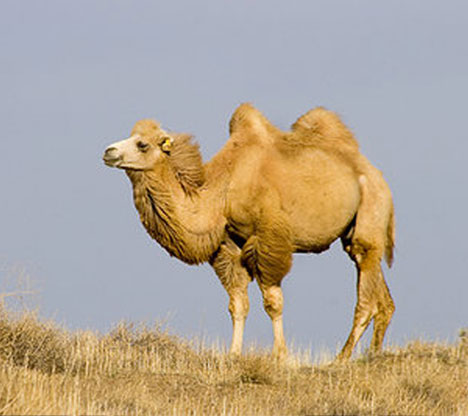Bactrian Camel

Previously thought to be the ancestor of all domestic camels, recent genetic studies have shown that the wild Bactrian camel (Camelus ferus) is in fact a distinct species, with an independent evolutionary history to its domestic relative.
The wild Bactrian camel is extremely well adapted for the harsh desert climate that it inhabits. Sandstorm damage is reduced by the dense eyelashes and the narrow nostrils that can be closed tightly against the storms. The two toes are connected with an undivided sole and are able to spread widely, allowing the camel greater ability to walk on sandy ground.
With a characteristic camel body shape, the wild Bactrian camel has a long curved neck, long legs and a split upper lip, borne at the end of the long triangular face. The coat of the wild Bactrian camel tends to be lighter than its domestic relative and is a sandier grey-brown colour. The coat of this species’ becomes thick and shaggy in winter when temperatures can fall to -30 degrees Celsius, and is lost in big sections as temperatures increase.
